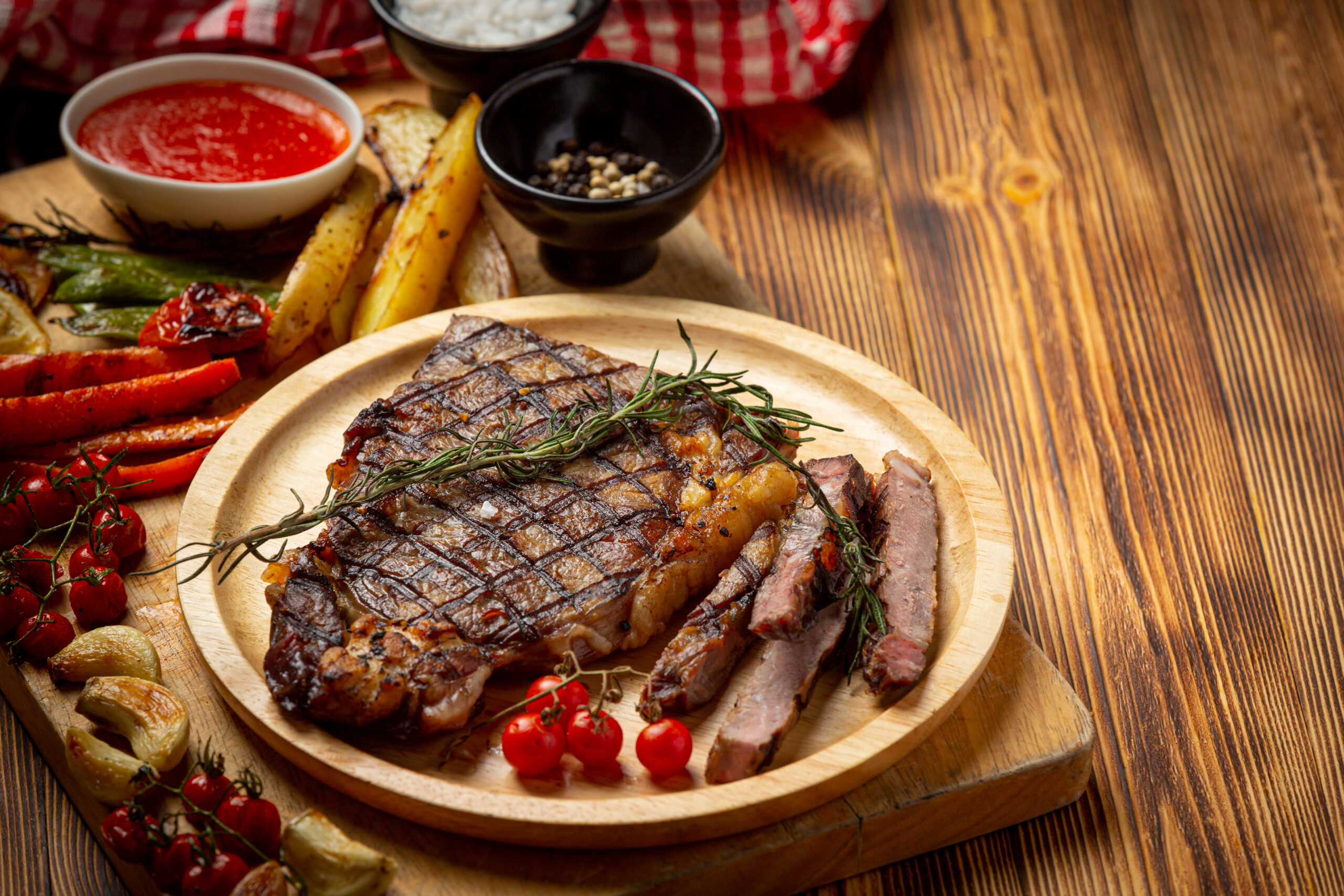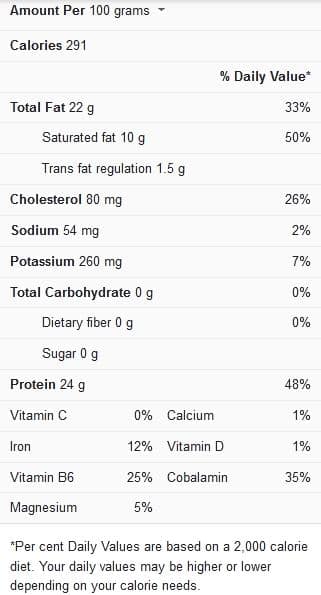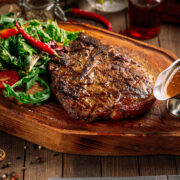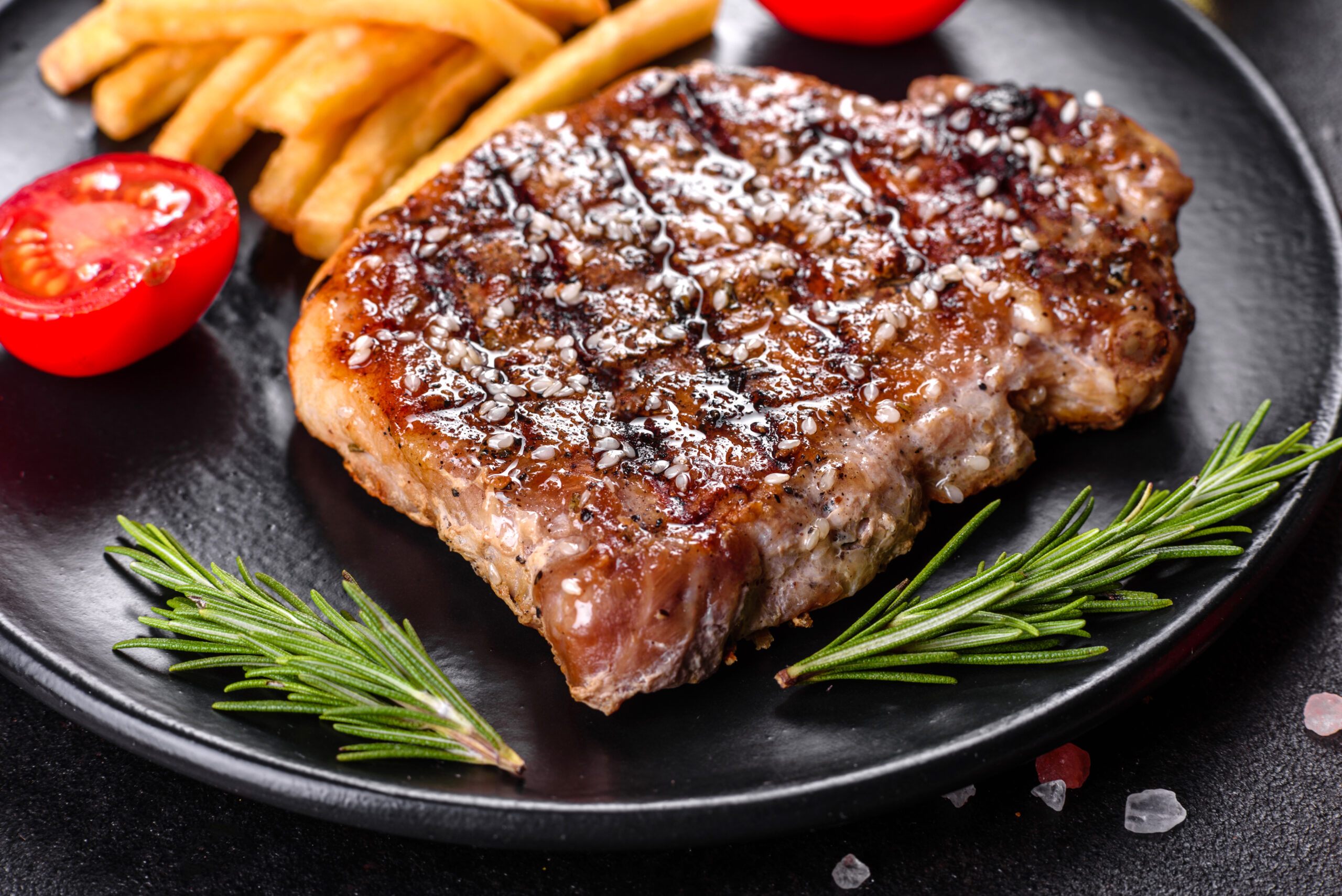One of the very finest approaches to enjoying steaks at home (and it’s not difficult to make) is with tender ribeye steaks grilled to juicy perfection. Ribeyes are fantastic – they’re delicate, delicious, well-marbled, and have these gorgeous fatty margins that, when well-browned, remind me of candy.
This wonderful cut of beef is an absolute favorite and, in my opinion, one of the most flavourful. There are no unique or exotic ingredients required; only steaks, seasonings, a brush of oil, and a pat of butter are all that are required for excellence.

Ribeye Steak Nutrition Facts

Tips For Cooking A Boneless Ribeye Steak
- To bring the steaks to room temperature, take them out of the fridge an hour before cooking. However, if you prefer your steaks medium-rare, you can use them cold from the refrigerator.
- You can buy a boneless ribeye roast and then cut and freeze your own steaks. Wrapping them in plastic wrap foil and placing a couple of them in freezer bags is the easiest way to freeze them without getting freezer burns.
- Topping the grilled steaks with butter is a possibility. It adds a lot of flavor to the steaks and is one of the reasons why restaurant steaks are so delicious – butter is used to complete them.
- Since these steaks are large and fatty, the best sides are light and simple. Serve them with arugula salad, tomato salad, or asparagus salad as a side dish. They’re also delicious with roasted asparagus and steamed broccoli.
- While creamed spinach is a traditional steakhouse side dish, I believe it is too rich for these fatty steaks; therefore, sauteed spinach is a better option.
- In my experience, reheated steak isn’t very good. While leftovers can be kept in an airtight container in the fridge for up to 4 days, I will recommend you only make as much as you can eat right away.
- If you have any leftovers, try them cold; they’re actually rather tasty (kind of like thick, fatty slices of cold roast beef). If you need to reheat the leftovers, do so gently in the microwave (50% power). You should also make sure you keep it covered.
- While the steak is cooking on the grill, do not press it. Moreover, let steaks rest for 5-10 minutes before serving for optimal results.
- When cooking steaks, I highly recommend using kosher salt. It’s flavorful, and the coarse grind aids in the formation of the lovely crust that we all desire in a steak. Diamond Crystal kosher salt can be used, and you can use a little more of it because it has half the sodium of table salt or sea salt.
View this post on Instagram
How To Cook A Boneless Ribeye Steak
Sear each side of the ribeye steak in a super-hot cast-iron skillet, then finish it in a hot oven. This procedure will brown the fat and create a lovely crust on the outside of the steak while keeping the inside delicate and juicy.
Cooking ribeyes at home is simple, though you will require the correct proper equipment – the only way to get a perfect sear on the steak is to use a well-seasoned cast-iron skillet. You can enjoy two boneless ribeye steaks covered with butter on a cast-iron skillet.
- You can start by patting both sides of the steak dry with paper towels and season it well with 1¼ teaspoon salt and ½ teaspoon pepper.
- Now heat the medium cast-iron skillet for about 1-2 minutes until it is extremely hot; make sure the heat is over medium-high heat. Then pour the canola oil into it.
- Then proceed to place the ribeye steak in the center of the skillet and let it cook for 12-14 minutes. You will have to consistently turn it every 2-3 minutes or until a black crust forms on both sides.
- Now you will need to lower the heat to a medium-low temperature. Then move the steak to one side of the skillet.
- Proceed to add the butter, garlic, thyme, and rosemary to the opposite side, turning the skillet towards the butter and cooking 30 seconds to 1 minute – until the butter foams.
- Spoon the batter over the steak for 1-2 minutes – flipping and turning it over once – until internal temperature hits 120 degrees F for medium-rare or until your desired doneness is achieved.
- Then allow 15 minutes to rest before slicing the steak.
- Serve right away.
Measurement of doneness
When your steaks are 5 degrees below the recommended temperature, remove them. As they rest, the centers will continue to warm.
| 1 | Rare | 125°F | The center is vibrant red and pinkish towards the exteriors |
| 2 | Medium-Rare | 135°F | The center is quite pink, and the edges are slightly brown |
| 3 | Medium | 145°F | Light pink in the center, brown on the outside |
| 4 | Medium-Well | 155°F | The center is slightly pink, while the outside is brown |
| 5 | Well | 165°F | Brown in color all around |
How to cook a boneless ribeye steak
Instructions
- You can begin by preheating your oven to 500 degrees Fahrenheit. Then you can use some paper towels to wipe the steaks dry – keeping their surface dry will aid in the formation of a healthy crust.
- After that, thoroughly season them on both sides with kosher salt and black pepper – you may like to season the fatty corners as well.
- Then you should have a well-seasoned cast-iron skillet that should be heated over high heat until it is smoking hot (there’s no need to add any oil if the skillet is well-seasoned).
- Now you can toss the steaks into the skillet. Then cook for 2 minutes on each side, then an additional 30 seconds on the edges. If the skillet becomes too hot, reduce the heat to medium-high, but in general, you should let it be super-hot.
- After that, transfer the hot skillet to the preheated oven with care, using oven mitts. You can allow 3 minutes for medium-rare steaks and 5 minutes for medium-done steaks to rest in the pan – which is, by the way, the level of doneness recommended by the USDA.
- To keep the steaks warm, place them on a warm dish and cover them loosely with foil. Allow for 5 minutes of resting time before serving with butter on top.
Watch this video recipe to learn more about cooking a boneless ribeye steak.

